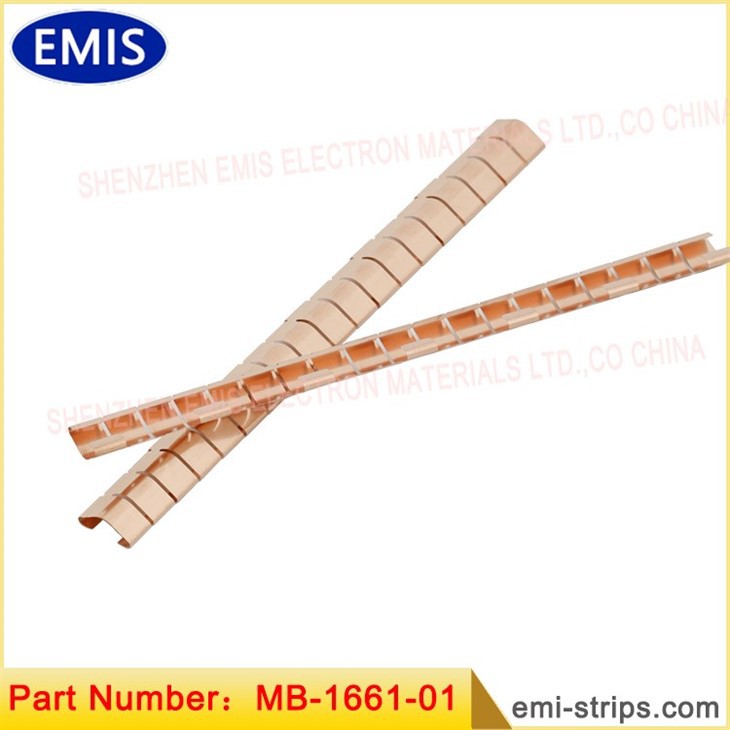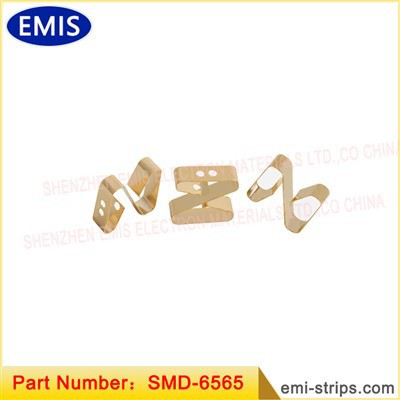As a supplier of copper finger stock, I'm often asked about the proper installation process. Copper finger stock is a versatile and effective solution for electromagnetic interference (EMI) shielding, grounding, and environmental sealing in various electronic and electrical applications. In this blog post, I'll guide you through the steps of installing copper finger stock to ensure optimal performance and reliability.
Understanding Copper Finger Stock
Before we dive into the installation process, let's briefly understand what copper finger stock is. Copper finger stock consists of thin, flexible fingers made of copper or copper alloy. These fingers are typically arranged in a pattern and can be attached to a substrate or frame. The flexibility of the fingers allows them to conform to irregular surfaces, providing a reliable electrical connection and shielding against EMI.
There are different types of copper finger stock available, including Track and Rivet Mount Fingerstock, Nickel Plated Beryllium Copper Finger Strips 0097052102, and Finger Stock Gasket. Each type has its own unique features and applications, so it's important to choose the right one for your specific needs.


Step 1: Prepare the Surface
The first step in installing copper finger stock is to prepare the surface where it will be mounted. The surface should be clean, dry, and free of any dirt, grease, or debris. Use a suitable cleaning agent to remove any contaminants, and then dry the surface thoroughly.
If the surface is rough or uneven, it may be necessary to smooth it out using sandpaper or a file. This will ensure that the copper finger stock makes good contact with the surface and provides effective shielding.
Step 2: Measure and Cut the Finger Stock
Once the surface is prepared, measure the length of the area where the copper finger stock will be installed. Use a sharp pair of scissors or a utility knife to cut the finger stock to the appropriate length. Make sure to leave a little extra length to allow for any adjustments or overlap.
When cutting the finger stock, be careful not to damage the fingers. The fingers should be cut cleanly and evenly to ensure proper performance.
Step 3: Apply Adhesive
Depending on the type of copper finger stock and the application, you may need to apply adhesive to the back of the finger stock to secure it to the surface. There are different types of adhesives available, including pressure-sensitive adhesives (PSAs) and conductive adhesives.
If you're using a PSA, simply remove the backing from the adhesive and press the finger stock firmly onto the surface. Make sure to smooth out any air bubbles or wrinkles to ensure good adhesion.
If you're using a conductive adhesive, follow the manufacturer's instructions for application. Apply the adhesive evenly to the back of the finger stock and then press it onto the surface. Allow the adhesive to dry completely before using the equipment.
Step 4: Install the Finger Stock
Once the adhesive is applied, carefully place the copper finger stock onto the prepared surface. Start at one end and slowly press the finger stock down, working your way along the length of the surface. Make sure the finger stock is aligned properly and that the fingers are in contact with the surface.
If the finger stock needs to be bent or shaped to fit the application, use a pair of pliers or a bending tool to carefully bend the fingers. Be careful not to over-bend the fingers, as this can damage them and reduce their effectiveness.
Step 5: Secure the Finger Stock
After the finger stock is installed, it's important to secure it in place to prevent it from moving or shifting. Depending on the application, you may need to use additional fasteners, such as screws, rivets, or clips, to secure the finger stock.
If you're using screws or rivets, make sure to drill the holes carefully and use the appropriate size of fasteners. Tighten the fasteners securely, but be careful not to overtighten them, as this can damage the finger stock.
Step 6: Test the Installation
Once the copper finger stock is installed and secured, it's important to test the installation to ensure that it's working properly. Use a multimeter or other testing equipment to measure the electrical continuity and shielding effectiveness of the finger stock.
If the finger stock is not providing the desired level of shielding or electrical continuity, check for any gaps or areas where the finger stock is not making good contact with the surface. Make any necessary adjustments or repairs to ensure proper performance.
Tips for a Successful Installation
- Choose the right type of copper finger stock for your application. Consider factors such as the type of equipment, the level of EMI shielding required, and the environmental conditions.
- Follow the manufacturer's instructions for installation. Different types of copper finger stock may have different installation requirements, so it's important to read and follow the instructions carefully.
- Use the right tools and materials. Make sure you have the necessary tools, such as scissors, pliers, and a multimeter, and the appropriate adhesive or fasteners.
- Take your time and be careful. Installing copper finger stock requires precision and attention to detail. Take your time to ensure that the finger stock is installed correctly and that it's making good contact with the surface.
- Test the installation before using the equipment. This will help you identify any issues or problems early on and make any necessary adjustments or repairs.
Contact Us for Your Copper Finger Stock Needs
If you have any questions or need further assistance with installing copper finger stock, or if you're interested in purchasing our high-quality copper finger stock products, please don't hesitate to contact us. Our team of experts is here to help you find the right solution for your specific needs and provide you with the support and guidance you need for a successful installation.
References
- Manufacturer's installation guides for copper finger stock products
- Industry standards and best practices for EMI shielding and grounding






